Best Silent Films – TOP 10
Silent film is completely different from modern productions, but this otherness can be a real asset. It was during that period that cinema became an art, and such great masters as Charlie Chaplin, Fritz Lang and Sergei Eisenstein, for example, contributed to it. They laid the foundations of classic cinema.
Best silent films
1. “The Gold Rush” (1925)
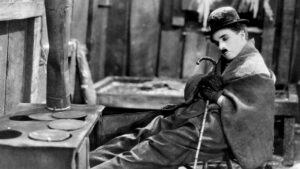
“The Gold Rush” (1925) by Charlie Chaplin is an undisputed masterpiece of silent cinema. The film, which tells the story of poor gold digger Charlie Tramp, is a true masterpiece of comedy. Chaplin made phenomenal use of all his skills here, being a combination of pantomime, the costume of an elegant tramp with a cane and bowler hat, and funny gags, such as eating noodles made from shoelaces.
“The Gold Rush”, however, delights not only with a series of hilarious scenes, but above all with a touching message. For the film emphasizes the dignity of the poor man and his right to dream of happiness.
2. “Greed” (1924)

“Greed” (1924) by Erich von Stroheim is also an outstanding work of silent cinema, being an adaptation of the American novel by Frank Noris Mc Teague: A Story of San Francisco. The film tells the story of German immigrants arriving in California in search of prosperity. Paradoxically, the lottery win of a young woman, Trina Sieppe (Zasu Pitts), on the day of her engagement leads to a string of misfortunes and tragedies. The lust for money causes a deadly conflict between Trina’s husband and her former partner, as well as between the couple themselves.
“Greed” – an amazing story about the pernicious power of money, presented through interesting artistic means is a remarkable achievement in film history. Interestingly, the first version of the work lasted as long as 10 hours, but eventually the film was shortened (the last remake took place in the 1990s), which contributed to its rediscovery.
3. “Battleship Potemkin”
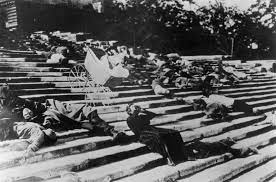
“Battleship Potemkin” by Sergei Eisenstein is one of the most important films in the history of cinema. A work of Soviet propaganda, the story of an episode of the 1905 revolution – the mutiny of the crew against the officers on the battleship Potemkin – is at the same time an outstanding achievement, especially in the field of editing. Eisenstein created an evocative picture of a revolution carried out by an oppressed people.
He particularly masterfully showed the (contrived, by the way) massacre of the population on the Odessa steps. The image of a rolling baby carriage builds the climax of tension in the film. Before the eyes of the viewer, the director creates a film myth.
4. “Nosferatu. A Symphony of Horror” (1922)
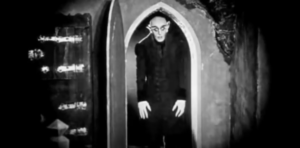
“Nosferatu. A Symphony of Horror” by Friedrich Wilhelm Murnau is one of the classics of silent cinema. The film laid the foundation for all horror genres. The story of a vampire from Transylvania, who comes to Europe to carry out its annihilation, is a mastery of the atmosphere of mystery and fear. Among other things, the atmosphere is built by eerie sepia-toned cinematography, the play of chiaroscuro or symbolic props. Nosferatu defines the dark forces that can destroy human civilization, with uncontrolled sexual desire at the top of the list of threats.
5. “Destiny” (1921)

“Destiny” by Fritz Lang is a beautiful, poetic story about the power of love overcoming death. The main character of the film is a young girl who loses her beloved and decides to get him back by traveling beyond the Wall of Fate. It turns out that there is a chance to save a man by protecting one of three candle flames. They signify the lives of three different young men in different eras and latitudes (Baghdad, Venice and China). The attempt fails, however, and the heroine decides to give her life for the infant herself and thus join her chosen one.
The film uses a whole range of sophisticated artistic means, such as trick cinematography, special effects, and, above all, masterful chiaroscuro and symbolic set design. Lang’s “Destiny” is part of the most outstanding achievements of German Expressionism.
6. “The Cabinet of Dr. Caligari” (1920)
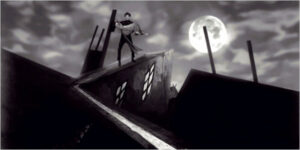
“The Cabinet of Dr. Caligari” by Robert Wiene is not as outstanding a work as Nosferatu, for example, but it is impossible to imagine a silent cinema classic without this title. This is because it is an image that constantly recurs in modern culture, and is also treated as an allegory of totalitarian social systems. The film tells the story of a demonic psychiatrist who uses a sleepwalker to carry out terrible crimes. In this image was seen the foreshadowing of German fascism, which was soon to capture the minds of people and lead them to terrible deeds. The work has an artistic character, with expressionist elements playing a special role in it.
7. “The Last Laugh” (1924)
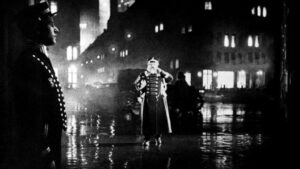
“The Last Laugh” is another film by Friedrich Wilhelm Murnau, and while, “Nosferatu” is a typical example of German Expressionism, the work is a quintessential example of the trend known as kammerspiel. The main character of the work is an elderly hotel porter who is relegated to the position of toilet attendant. The extremely moving story is at the same time an outstanding achievement of cinematic language. The camera, as it were, narrates the various stages of the plot itself. Its movement is symbolic, replacing words, expressing the social and psychological drama of the protagonist.
8. “Mother” (1926)
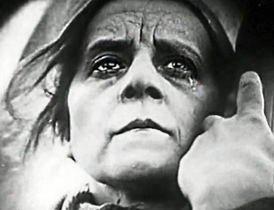
“Mother” by Vsevolod Pudovkin is a film of exceptional emotional charge, and is a perfect use of screen tools. The work was shot on the basis of Maksim Gorky’s novel. The film depicts the story of the working-class Vlasov family. First, as a result of the riots, the father is killed, and later the son Pavel, faithful to the ideals of the revolution, is killed. The distraught mother takes over the red banner from the hands of her slain son to die like him. Vera Baranovskaya and Nikolai Batalov starred in the lead roles.
9. “The General” (1926)
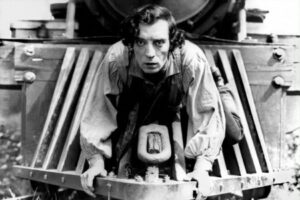
“The General” (1926), directed by Buster Keaton and Clyde Bruckman, is a great comedy set during the Civil War. The main character, John Gray, an engine driver, sets off in pursuit of the “General” train stolen by the Unionists. The reason for his pursuit is not only the loss of the locomotive, but, more importantly, his fiancée Anabelle (Marion Mack), who happened to be in one of the train cars. The film is often compared to Charlie Chaplin’s “Gold Rush”. Indeed, Buster Keaton creates a similar type of hero – an ordinary man who has the courage to fight for his fate.
10. “City Lights” (1931)
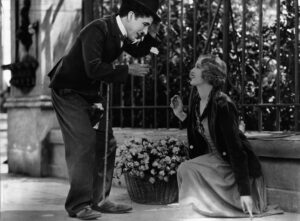
“City Lights” by Charlie Chaplin is a unique film. This is because the director shot it already after the sound breakthrough. He made a silent work as a tribute to the irretrievably past silent era of cinema. The plot revolves around the story of Charlie Tramp, who ends up in the big city, where he meets a beautiful, blind florist. Thanks to various coincidences, the protagonist pretends to be a wealthy man, and eventually gets the money needed for surgery for the woman.
Chaplin makes one last use of the artistic means of silent cinema, above all his masterful pantomime and the eloquence of the images he presents. In doing so, he creates a highly lyrical tale about the magic of old cinema.
